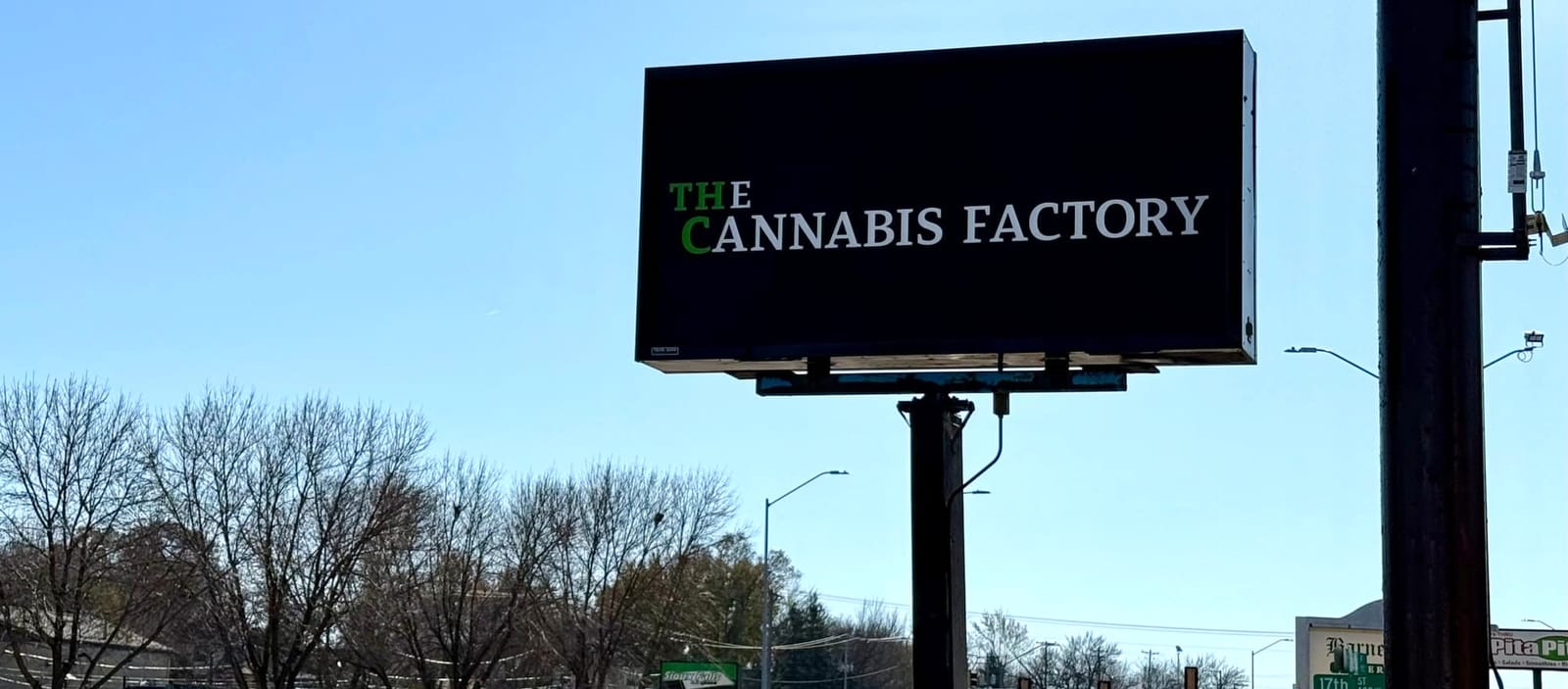Cannabis/marijuana/pot dominates many political, scientific and cultural conversations nowadays. In 2023, half of U.S. adults said that they'd used it least once in their lives. But to many, it still remains a confusing and complex drug.
Below is a guide to the cannabis sativa plant, its uses and its legality in South Dakota.
What is THC and what does it do?
THC, or tetrahydrocannabinol, is the intoxicating compound in marijuana plants. It produces psychoactive effects associated with a typical "high."
Marijuana products vary in their THC content because different strains of the marijuana plant have different THC content. The average potency of seized marijuana in 2022 was 16.14%, according to the National Institute on Drug Abuse.
Through an extraction process that separates the potent flower from the rest of the plant, some THC products, usually in the form of vape pens, resin, or wax, can have up to 90% THC content.
What is the difference between hemp and marijuana?
Hemp and marijuana have been conflated for years, which led to hemp’s ban in the United States. In 1970, then-President Reagan passed the Controlled Substances Act, which listed both hemp and marijuana as controlled, banned substances.
But the plants are very different, even in appearance.
While they’re both strains of the cannabis sativa plant, hemp grows in stalks, much like bamboo, with flowering heads on the top. These stalks loom large and can grow up to 15 feet tall.
Marijuana plants, on the other hand, are much smaller and probably look more familiar to the general public. Their green, three-leafed flowers are the most recognizable symbol of the drug.
The biggest difference between hemp and marijuana is in their usage.
Hemp, with its hard stalks, inner fibers and coarse hurds, can be used to create a variety of non-consumable, non-intoxicating products. "Hempcrete" (hemp concrete), hemp wood, animal hurds and hemp fiber clothing are all common, popular uses for the plant. South Dakota is the No. 1 producer of hemp fiber in the country, thanks to the state's climate and soil.
There's also a major difference in THC content: Hemp plants typically contain anywhere from 0.2% to 0.5% THC, compared to marijuana plants, which typically hover around 15% to 20%.
The 2018 Farm Bill reclassified hemp as a non-controlled, and therefore legal, plant, as long as the plant contains less than 0.3% THC by dry weight.
While hemp can be synthetically modified into hemp-derived THC products, the raw, unmodified plant cannot be smoked or consumed to create a "high."
What does "medical marijuana" mean?
Medical marijuana was voted into legality in South Dakota in 2020 and formally legalized in 2021. SDCL 34-20G establishes the rules and regulations for medical cannabis in the state.
The first dispensary in the state opened in 2022. The South Dakota medical cannabis website keeps a list of certified establishments in the state, which include growers, distributors, testers and processors of medical marijuana.
In South Dakota, patients can only apply for a medical marijuana card after a physician recommendation. They'll then be directed to an online portal where they pay the yearly registration fee of $75.
Eligible conditions for medical marijuana cards are limited in the state to "debilitating" medical conditions, which include but are not limited to:
- AIDS or HIV positive status
- Amyotrophic lateral sclerosis
- Cancer or its treatment
- Crohn’s disease
- Epilepsy and seizures
- Glaucoma
- Multiple sclerosis
- Post-traumatic stress disorder (PTSD)
Patients who have debilitating or severe pain, seizures or severe nausea, among other symptoms, as a result of other conditions may also be eligible for a medical marijuana card.
The South Dakota Department of Health's most recent annual report said that, of the 13,325 active cardholders in June 2024, 10,001 patients got those cards for severe pain – over 70% of medical cannabis cardholders in the state. There are currently more than 17,000 medical cannabis cardholders in South Dakota.
South Dakota's Medical Marijuana Oversight Committee, which began meeting in late 2025, was created to greater understand and regulate the medical marijuana industry in the state. It is chaired by Rep. Josephine Garcia, a Codington County Republican, and has not yet proposed any legislation or regulation of medical cannabis in the state, though there have been discussions about marijuana potency, minors' access to medical cannabis and fines for inspection violations.
Why can I buy marijuana on reservations?
Native American tribes in the U.S. are viewed as sovereign entities, with the ability and authority to establish their own laws and regulations. While cannabis use on reservations was historically regulated by the federal government, the 2013 Cole Memorandum established tribes' sovereignty to create their own cannabis regulations, regardless of the bordering state's laws.
Several tribes in South Dakota, including the Flandreau Santee Sioux Tribe and the Oglala Lakota Tribe of the Pine Ridge Indian Reservation, have incorporated laws that allow them to grow, process and sell marijuana products on their tribal lands.
On Pine Ridge, recreational marijuana is legal for those over 21, and there are several dispensaries on the reservation. But any products purchased on the reservation must only be consumed there and cannot be taken off tribal lands.
On the Flandreau reservation, medical marijuana is legal and sold at Native Nations Cannabis Dispensary. Unlike medical marijuana dispensaries in the rest of the state, medical marijuana cards from any state or jurisdiction are accepted for purchase.
Why can I buy THC products in South Dakota stores?
South Dakotans who frequent bars, liquor stores and even some grocery stores in the state will have seen new products in the past few years. They commonly take the form of canned seltzers but can also come as gummies, vapes and other snack products.
These products are made with hemp-derived THC, an intoxicating compound that mimics the experience of traditional cannabis use. Hemp-derived THC began its rise in popularity when the 2018 Farm Bill re-legalized the growth of industrial hemp.
The South Dakota Legislature banned the sale and distribution of THC products derived from hemp in 2024, but these products are still widely available and sold across the state. The products remain in an uncertain balance in terms of legality.
In November 2025, Attorney General Marty Jackley released an official opinion in response to questions about hemp-derived THC seltzer sales in Brookings. That opinion said that without comprehensive testing of products, it could not be determined whether those products were legal.
South Dakotans may not be able to buy hemp-derived THC products for long, though.
The 2026 Agricultural Appropriations package was passed as the government shutdown ended on Nov. 12, 2025. That package federally bans consumable hemp products with a "quantifiable" amount of THC, closing a "loophole" that Sen. Mitch McConnell said was unintended. It gives hemp growers, processors and distributors one year to follow new regulations.
What's the difference between Delta-8 and Delta-9 THC?
Delta-9 THC is the scientific name for the THC compound found in cannabis sativa plants. Delta-8 molecules are found in much lower concentrations in the cannabis sativa plant – both hemp and marijuana – but can be chemically modified to produce similar intoxicating effects as Delta-9 THC.
Delta-8 THC products became popular after the 2018 Farm Bill was passed because most regulations on marijuana in the United States specifically outlaw products and plants containing high levels of Delta-9 THC and because Delta-8 THC is found in low concentration.
The process to extract Delta-8 THC from hemp varies from manufacturer to manufacturer, which means that it's difficult to determine the actual potency of a Delta-8 THC product. The Food and Drug Administration released a report in 2022 that 104 adverse events had been reported as a result of Delta-8 THC.
So what forms of marijuana are actually legal in South Dakota?
The answer to this question is not necessarily as clear as simply saying "marijuana is legal" or "marijuana is illegal."
Recreational marijuana is not legal in South Dakota, but it is legal on the nearly 3,500 square miles that make up the Pine Ridge Indian Reservation.
Medical marijuana patients with a valid South Dakota medical cannabis card can possess, purchase and use marijuana in South Dakota. They're limited in the amounts they can hold at one time, though, to 3 ounces or less.
Medical cannabis users who hold cards from other states or jurisdictions will not be arrested for the possession or use of marijuana in South Dakota, but they cannot purchase medical cannabis in the state. However, anyone with an out-of-state card can drive 45 miles north of Sioux Falls to the Flandreau Indian Reservation, where its medical dispensary accepts out-of-state medical cannabis cards.
And hemp-derived THC remains a murky area for both consumers and sellers. Though the Legislature passed a bill banning synthetically modified hemp products, like Delta-8 products and other hemp-derived THC, the products are available in spades across the state – most commonly as hemp-derived THC seltzers.
In September 2025, a statewide sting operation prompted Jackley, the state attorney general, to indict five individuals for possession and distribution of controlled substances. Three of those indictments were related to industrial hemp modification (hemp-derived THC) offenses.
Trusted, independent sources of information are needed more than ever. Help us continue delivering timely, fact-based storytelling today.
This story was produced by South Dakota News Watch, an independent, nonprofit organization. Read more stories and donate at sdnewswatch.org and sign up for an email for statewide stories. Investigative reporter Molly Wetsch is a Report for America corps member covering rural and Indigenous issues. Contact her at molly.wetsch@sdnewswatch.org.







